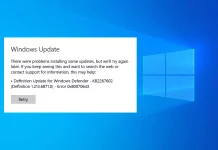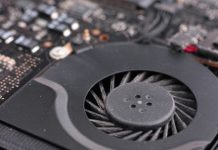BSOD ( Bluescreen of Death) Errors Windows 10
This is applicable for Windows 10 PC in any build which cannot boot or go to Desktop Screen (Laptop/Desktop)
Common Bluescreen Error :
BSOD error codes: 0x0000000A This BSOD means that Microsoft Windows or a kernel-mode driver accessed paged memory at DISPATCH_LEVEL or above.
BSOD error code 0x0000000A may also show “IRQL_NOT_LESS_OR_EQUAL” on the same blue screen. 0x00000009 This BSOD is uncommon.
BSOD error code 0x00000009 may also show “IRQL_NOT_GREATER_OR_EQUAL” on the same blue screen. 0x00000022 This BSOD is uncommon.
BSOD error code 0x00000022 may also show “FILE_SYSTEM” on the same blue screen.
BSOD error code 0x00000024 This BSOD means a problem occurred in ntfs.sys, the driver file that allows the system to read and write to NTFS drives.
BSOD error code 0x00000024 may also show “NTFS_FILE_SYSTEM” on the same blue screen.
BSOD error code 0x000000D1 This BSOD means that a kernel-mode driver attempted to access pageable memory at a process IRQL that was too high.
BSOD error code 0x000000D1 may also show “DRIVER_IRQL_NOT_LESS_OR_EQUAL” on the same blue screen.
How to Fix a Blue Screen of Death
This troubleshooting guide will apply to any version of Windows, including Windows 10, Windows 8, Windows 7, Windows Vista, and Windows XP.
When you get the blue screen error, your system will automatically roll back any changes and restore the previous version of the OS.
You can troubleshoot this problem while trying to upgrade by doing the following.
Uninstall applications
An incompatible piece of software, such as an old program or third-party antivirus, is likely the root of the problem.
To resolve this issue, try uninstalling any unnecessary apps or a pieces of software you installed recently, using these steps:
- Open Settings.
- Click on System.
- Click on Apps & features.
- Select the app and click the Uninstall button.
- Complete the uninstallation.
- Repeat the steps to remove every piece of software that may be causing the problem.
Use System Restore
Open Control Panel. Tap or click on System and Security within Control Panel.
In the System and Security window that’s now open, click or tap System.
On the left, click or tap the System protection link.
From the System Properties window that appears, tap or click the System Restore… button. If you don’t see it, make sure you’re on the System Protection tab.
Tap or click Next > from the System Restore window titled Restore system files and settings.
Select the restore point you want to use from those in the list.
-
With your chosen restore point selected, tap or click the Next > button.
Confirm the restore point you want to use on the Confirm your restore pointwindow and then tap or click the Finish button.
System Restore will now begin reverting Windows to the state it was in at the date and time logged with the restore point that you chose in Step 7.
You’ll see a small System Restore window that says Preparing to restore your system…, after which Windows will almost completely shut down.
Scan your computer for viruses.
Some viruses can cause a Blue Screen of Death, especially ones that infect the master boot record (MBR) or boot sector.
Install Latest Device driver
In the case that you’re getting a stop error because of an outdated device driver, you can do the following:
- Use the Windows key + X keyboard shortcut to open the Power User menu.
- Click on Device Manager.
- Expand the device causing the problem.
- Right-click the device and select Update Driver Software.
- Click the Search automatically for updated driver software option.
- It takes time for device-driver updates to appear through Windows Update. This means that if you couldn’t find any new updates using Device Manager, you may have to check your device manufacturer’s support website to download and install newer drivers.
Start your Computer in Recovery Mode
Do a power interruption on your device by pressing the Power Button of your PC and let the computer restart do it 3-5 times until we reach the Windows Recovery environment, if this will not work try to Press Shift+ F8 while the computer is booting up.
Once you enter the Windows Recovery
Option 1: System Restore Once you click Troubleshoot then click Advanced Options, we can do System Restore if there are software changes on your device(Updates, downloads or configurations)
Option 2: Start your PC on Safemode with Network or Minimal For Safemode you just need to click Startup settings Instead then click Restart .
By these you can either Press F5 or F3 if there is a Display error (Typically for GPU or Display Driver error)
Option 3: Reset keep my files or Remove everything
Note: Reset Keep my files will delete all applications on your device but it will keep all your files, while Reset remove everything will fully wipe the drive (fresh install) that will result to deletion of all files.
Check all internal data and power cables
Make sure all internal cables, cards, and other components are installed and seated properly. Hardware that’s not firmly in place can cause a Blue Screen of Death, so try reseating the following and then test for the STOP message again.
If You’ve Identified Software as the Cause of the BSOD
One of these things should help:
- Reinstall the software.
- Check for and install any available program updates.
- Check with the developer for support information.
- Try a competing program.



































